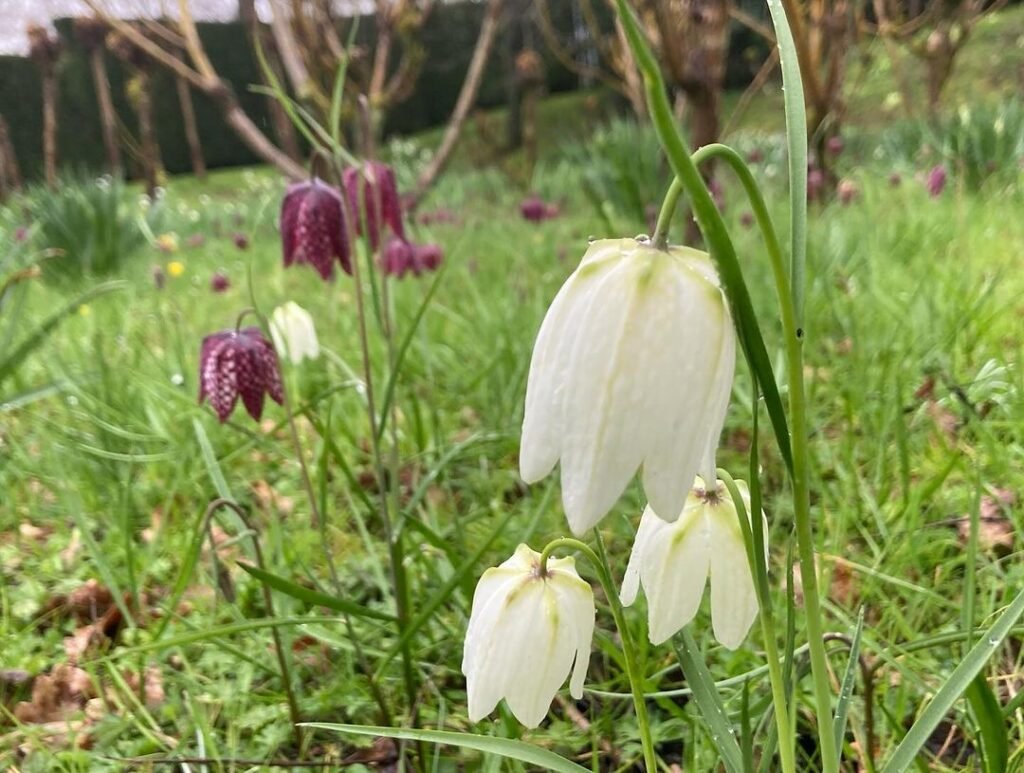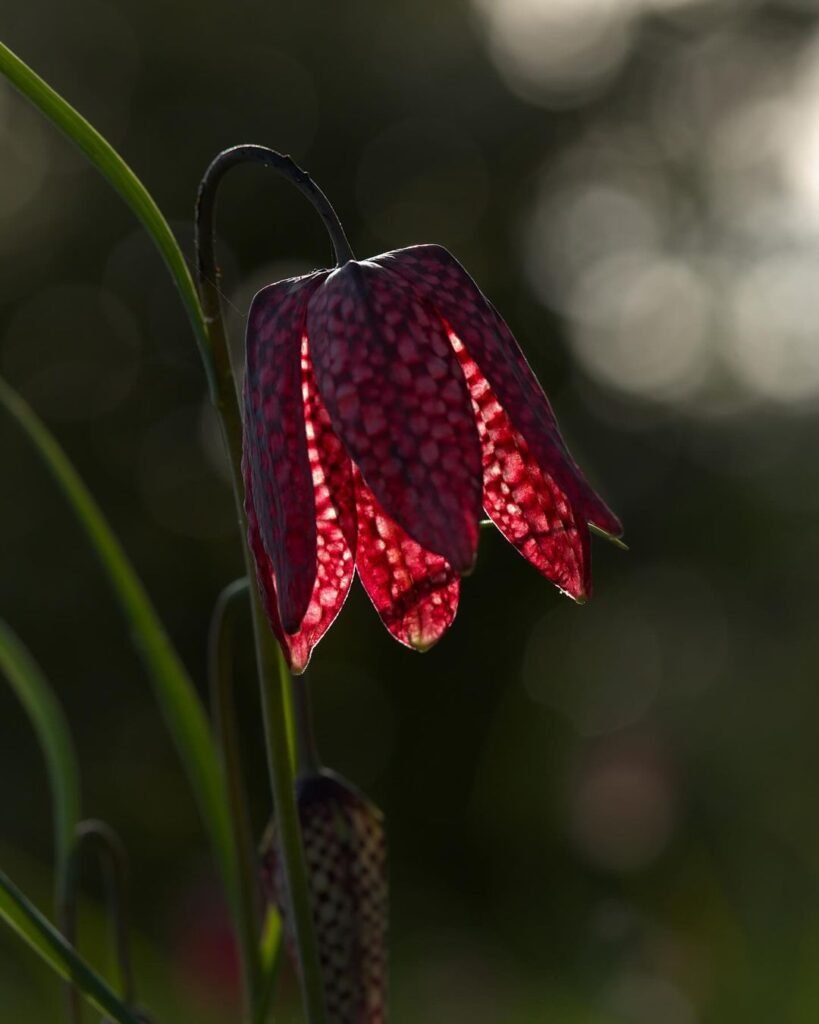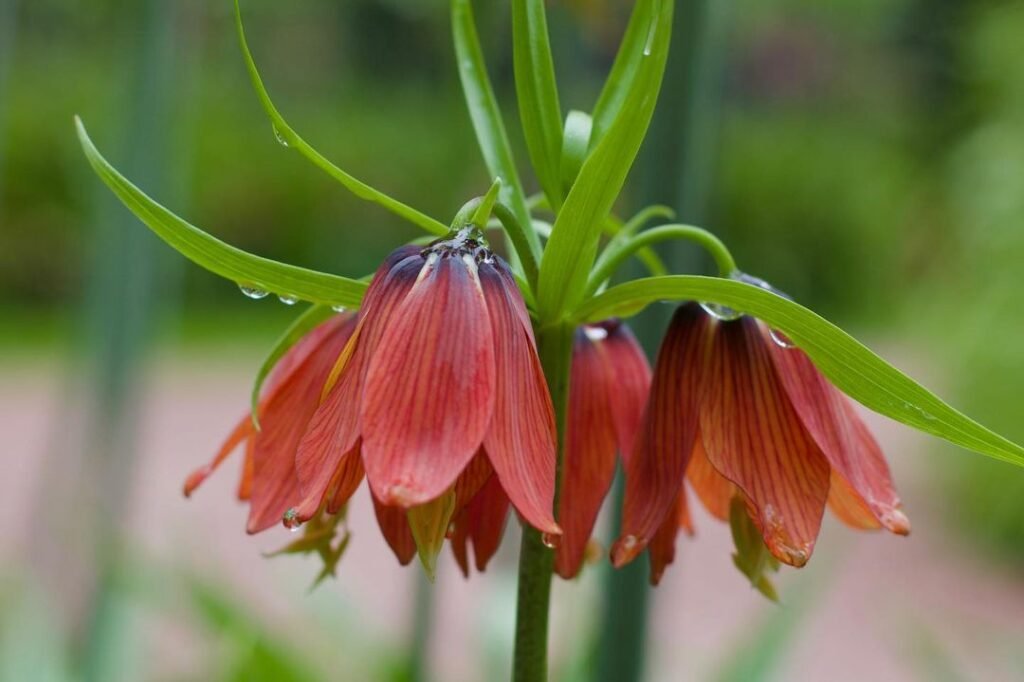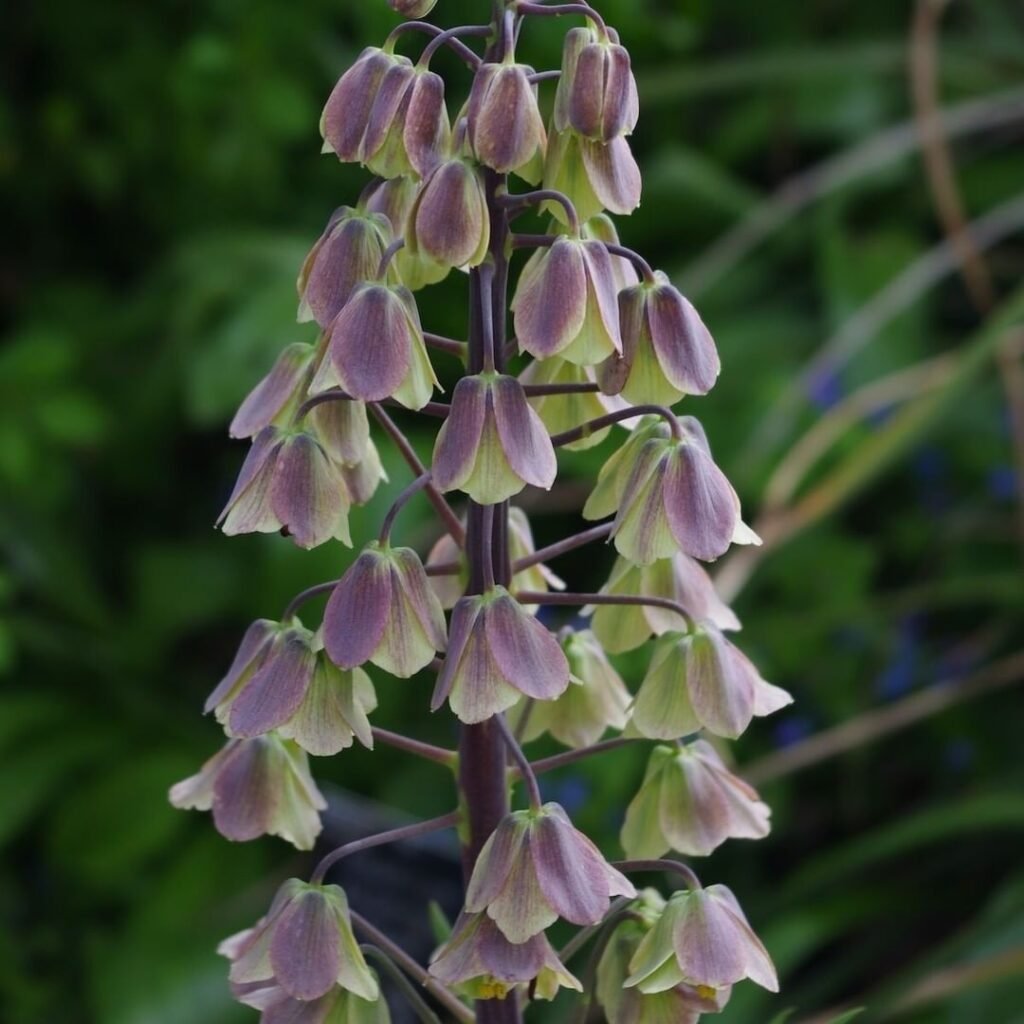Discover expert tips on planting and maintaining Fritillaria for a vibrant and beautiful garden. Learn the secrets to successful cultivation, from soil preparation to seasonal care, ensuring stunning blooms and healthy growth.
In the world of spring-blooming bulbs, fritillaria stand out as true gems, captivating gardeners with their unique and often whimsical appearance. These fascinating plants, also known as fritillary flowers, boast a remarkable variety of shapes, colors and patterns that add a touch of enchantment to any garden.
Here’s an information chart for Fritillaria, commonly known as Fritillary:
| Attribute | Details |
|---|---|
| Botanical Name | Fritillaria spp. |
| Common Name | Fritillary |
| Plant Family | Liliaceae |
| Hardiness Zone | USDA zones 4-8 (varies by species) |
| Sun Exposure | Full sun to partial shade |
| Soil Type | Well-drained, fertile soil |
| Watering | Moderate; prefers consistently moist soil |
| Growth Habit | Herbaceous perennial |
| Height/Spread | 6 inches to 4 feet tall / 6-12 inches wide (varies by species) |
| Special Features | Unique, bell-shaped flowers, some species have checkered patterns, early spring bloomer, attracts pollinators |
Origins and History

The genus Fritillaria is part of the lily family (Liliaceae) and includes over 100 species native to various regions across the Northern Hemisphere. These plants have a long and storied history, with some species being cultivated for centuries in gardens and revered for their ornamental value.
One of the most well-known species, the Snake’s Head Fritillary (Fritillaria meleagris), has been a beloved addition to English gardens since the 16th century and is often associated with traditional cottage gardens.
Botanical Characteristics

Fritillarias are characterized by their distinctive bell-shaped or nodding flowers, which can be found in a wide range of colors, including shades of purple, yellow, white and even greenish-brown. Many species feature intricate patterns or tessellations on their petals, adding to their unique charm.
These plants typically grow from bulbs, producing slender stems with whorled or alternate leaves. Depending on the species, fritillarias can range in height from a few inches to over three feet tall, making them suitable for various garden settings.
Cultivation and Growing Conditions

While fritillarias have a reputation for being somewhat challenging to grow, with the right conditions and care, they can thrive and add a captivating presence to your garden. Here are some key factors to consider when cultivating these beautiful bulbs:
Soil
Fritillarias prefer well-draining soil that is rich in organic matter. They can tolerate a wide range of soil types, from sandy loam to clay, as long as the drainage is adequate.
Sunlight
Most species require full sun to partial shade, with at least six hours of direct sunlight per day for optimal blooming.
Planting
Plant fritillaria bulbs in the fall, typically between September and November, for spring blooms. Ensure that the bulbs are planted at the recommended depth, which varies by species.
Water
Water fritillarias regularly during their active growth period in the spring, keeping the soil consistently moist but not waterlogged.
Fertilizer
A balanced, slow-release bulb fertilizer applied in early spring can provide the necessary nutrients for healthy growth and abundant blooms.
Popular Fritillaria Species and Cultivars
The fritillaria genus offers a diverse array of species and cultivars, each with its own unique charm. Here are some popular choices for gardeners:
Fritillaria meleagris (Snake’s Head Fritillary)

This iconic species features nodding, bell-shaped flowers in shades of purple, white or checkered patterns.
Fritillaria imperialis (Crown Imperial)

A striking plant with a whorl of pendant, bell-shaped flowers atop a tall stem, surrounded by a crown of leafy bracts.
Fritillaria persica (Persian Lily)

Boasting deep purple, almost black flowers with a distinctive checker pattern, this species is a true showstopper.
Fritillaria camschatcensis (Kamchatka Fritillary)

Nodding, dark purple flowers with a yellow interior make this species a stunning addition to any garden.
Fritillaria raddeana

A dwarf species with bell-shaped, yellow flowers and a unique, mottled pattern on the petals.
Companion Planting and Garden Design
Fritillarias can be seamlessly incorporated into various garden designs, adding texture, height and visual interest to your outdoor spaces. Here are some ideas for companion planting and garden design:
Rock Gardens
Smaller fritillaria species, such as Fritillaria raddeana or Fritillaria acmopetala, make excellent additions to rock gardens, where their delicate blooms can be appreciated up close.
Meadow or Wildflower Gardens
The Snake’s Head Fritillary (Fritillaria meleagris) is a perfect choice for naturalized plantings or meadow gardens, where it can create a stunning display when planted en masse.
Cottage Gardens
The whimsical and intricate patterns of fritillarias make them a natural fit for traditional cottage gardens, where they can be paired with other spring-blooming bulbs and perennials.
Woodland Gardens
Many fritillaria species thrive in the dappled shade of woodland gardens, where they can be planted among ferns, hostas and other shade-loving companions.
Container Gardening
Dwarf fritillaria varieties, such as Fritillaria raddeana or Fritillaria stenanthera, can be grown in containers, adding a touch of elegance to patios or balconies.
Maintenance and Care
To ensure the longevity and optimal performance of your fritillaria plants, proper maintenance and care are essential. Here are some tips to keep in mind:
Deadheading
Remove spent flowers after blooming to prevent the plant from expending energy on seed production.
Foliage Care
Allow the foliage to die back naturally after flowering, as this process replenishes the bulb for the following season.
Dividing
Larger fritillaria clumps can be divided every three to five years in the fall to maintain vigor and promote better flowering.
Pests and Diseases
Watch for common bulb pests like aphids, thrips or bulb flies and address any issues promptly with appropriate organic or chemical controls.
Winter Protection
In colder climates, provide a thick layer of mulch or leaf litter over the planting area to insulate the bulbs during harsh winters.
Fritillarias are truly remarkable plants that add a touch of whimsy and enchantment to any garden. With their unique shapes, colors and patterns, these spring-blooming bulbs are sure to captivate gardeners and visitors alike.
By following the planting and maintenance tips outlined in this guide, you can successfully cultivate these fascinating plants and create a vibrant, eye-catching display in your outdoor spaces.
Whether you choose to incorporate fritillarias into a rock garden, meadow or traditional cottage setting, their beauty and charm are sure to leave a lasting impression. So, embrace the magic of these extraordinary bulbs and let them transform your garden into a true horticultural wonderland.
Pingback: Explore 20 Fascinating Flowers Beginning with F - Gardener's School